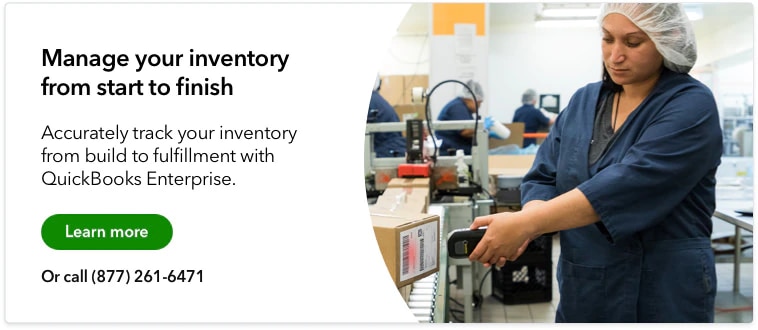With advances in manufacturing technology and logistics, the ability to create custom products at scale has given businesses the ability to produce more make to order products. While make to stock products may remain the default manufacturing process for most companies, make to order production has become a viable option for more businesses to consider.
What is the difference between make to order vs. make to stock
Make to order vs. make to stock technically work at opposite ends of the manufacturing supply chain.
Made to order
Similar to a restaurant, make to order (MTO) products are produced after an order is received. The order is considered the trigger in the manufacturing process that “pulls” the product into production, similar to just in time (JIT) manufacturing. In short, make to order relies on specific customer demand.
This type of order is especially popular with brands that might rely heavily on customization or personalization. The idea is that there is no “one size fits all” approach to product manufacturing and with the rise of innovative technologies, it takes less and less time for products to be made.
Make to stock
Make to stock (MTS) falls into the push portion of the production process. Instead of waiting to receive an order to manufacture a product, a company will rely on previous supply and demand numbers, as well as forecasting to determine how much product stock is needed.
Make to stock is a more traditional inventory strategy and is typically how many manufacturers handle inventory management and consumer demand. The product is ordered based on previous sales numbers and then housed in fulfillment centers until orders are received. Then the product is picked, packed, and shipped based on the order.
Benefits and challenges of make to order production
Make to order production is often assumed to be more complex than make to stock production, but it offers unique benefits that can support innovative business models.
Benefits: Make to order
Lower overhead: Inventory is expensive and stocking inventory you’re uncertain customers will want could lead to excess inventory and dead stock at the end of the year. (Even the best forecasting reports can fall short.) This dead stock typically leads to selling products at a reduced rate and causing the brand to lose money.
Higher customer satisfaction: Because make-to-order production doesn’t begin until an order is placed, companies can provide a lot more customization options to consumers. This leads to customers getting exactly what they want and personalizing a product to their own specifications. An example of this is Dell Computers, which allows customers to choose different options when building their next PC. In the end, the make to order business has provided the customer with exactly what they wanted.
Reduce inefficiency: The MTO production model focuses on making the exact item a customer orders when they order it. As a result, the manufacturing process is able to focus on exactly what materials, steps, and processes are needed to make that specific process. This cuts down on wasted time and effort and leads to a lean manufacturing model that only spends time on processes that generate revenue.
Challenges: Make to order
Inconsistent demand: Many businesses experience ebbs and flows in product demand. Without make to stock products or safety stock on hand, a spike in demand could add undue strain to your production process. This could cause delays in manufacturing and could lead to unhappy customers who have to wait longer. A sudden influx of production stress on equipment could also lead to damage which can further slowdown your operation.
Supply chain disruptions: Recent chip shortages have led to cell phone production delays and rising car prices as the demand has exceeded the supply. This is just one example of a lack of materials causing a delay in producing a finished product. If the raw materials that are needed are hard to come by it can significantly hinder a business's ability to actually do business.
Long wait times: Both of the above disadvantages can snowball into one giant disadvantage — long wait times. Customers still expect their orders to come quickly, even if they have placed an order for a make to stock item. Running out of raw materials or receiving an influx of orders that slows manufacturing can exacerbate wait times and lead to high levels of customer dissatisfaction. Often this leads to losing any chance of having a repeat customer as well, because they’re so disappointed in their initial experience with your brand.
Benefits and challenges: Make to stock
While make to stock is the default method of manufacturing, it doesn’t come without unique challenges.
Benefits: Make to stock
Fast fulfillment and shipping: Inventory in hand (or in your warehouse) means that as soon as an order is placed, it can be fulfilled and shipped. Most businesses can fulfill and ship orders the same day (depending on timezone and demand), meaning customers can expect products quickly.
Easier planning and scheduling: MTS is based on sales forecasts and advanced planning. With this type of insight, businesses are acutely aware of the amount of inventory they need to produce. This leads to a lot less wasted time and money.
Scalability: By knowing upfront how much product is needed, it’s much easier to develop economies of scale and mass produce inventory profitably.
Challenges: Make to stock
Customer unpredictability: While MTS inventory levels are based on forecasting and past sales performance, it’s hard to predict future demand when dealing with consumers. Consider any fad, and it’s easy to envision a warehouse full of Furbys or bell-bottom jeans simply collecting dust.
Inaccurate forecasting: Due to shifting customer trends, as well as shifting economies and other outside forces, forecasting is exceedingly difficult. Even all the spreadsheets and reports in the world may not lead to the most accurate forecast and excess inventory that simply won’t sell.
Uneven inventory: Having too much of one product and not enough of another is another challenge associated with make to stock. Additionally, extended storage times in a warehouse could lead to product damage and make items unsellable. This leads to even bigger losses, while also disappointing customers who were looking for a specific item, but were unable to find it.
How QuickBooks Enterprise keeps your manufacturing business running efficiently
With make-to-order manufacturing, longer lead times and inconsistent demand can lead to a higher risk of lost sales. However, lower overhead costs are an attractive alternative to purchasing a warehouse full of products (or parts) that may never sell.
For make to stock manufacturing, economies of scale and products on hand mean faster fulfillment and shipping. However, inaccurate demand forecasts can lead to having the wrong items at the wrong time and wasted inventory at the warehouse.
With QuickBooks Enterprise growing businesses get clear visibility across their supply chain with real-time inventory tracking. Additionally, QuickBooks Enterprise offers robust reporting tools that optimize revenue generation with over 200 customizable and industry-specific reports. Enterprise offers the tools and real-time tracking growing businesses need to make the most of their make to order or make to stock production processes.












